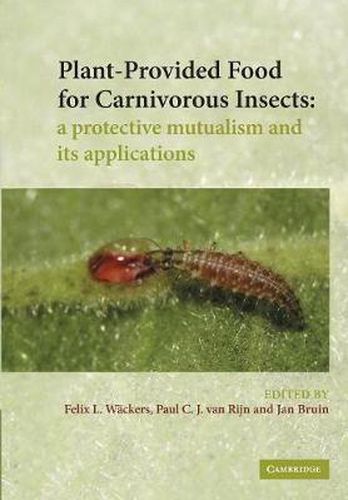Readings Newsletter
Become a Readings Member to make your shopping experience even easier.
Sign in or sign up for free!
You’re not far away from qualifying for FREE standard shipping within Australia
You’ve qualified for FREE standard shipping within Australia
The cart is loading…






Plants provide insects with a range of specific foods, such as nectar, pollen and food bodies. In exchange, they may obtain various services from arthropods. The role of food rewards in the plant-pollinator mutualism has been broadly covered. This book, first published in 2005, addresses another category of food-mediated interactions, focusing on how plants employ foods to recruit arthropod ‘bodyguards’ as a protection against herbivores. Many arthropods with primarily carnivorous lifestyles require plant-provided food as an indispensable part of their diet. Only recently have we started to appreciate the implications of non-prey food for plant-herbivore-carnivore interactions. Insight into this aspect of multitrophic interactions is not only crucial to our understanding of the evolution and functioning of plant-insect interactions in natural ecosystems, it also has direct implications for the use of food plants and food supplements in biological control programs. This edited volume provides essential reading for all researchers interested in plant-insect interactions.
$9.00 standard shipping within Australia
FREE standard shipping within Australia for orders over $100.00
Express & International shipping calculated at checkout
Plants provide insects with a range of specific foods, such as nectar, pollen and food bodies. In exchange, they may obtain various services from arthropods. The role of food rewards in the plant-pollinator mutualism has been broadly covered. This book, first published in 2005, addresses another category of food-mediated interactions, focusing on how plants employ foods to recruit arthropod ‘bodyguards’ as a protection against herbivores. Many arthropods with primarily carnivorous lifestyles require plant-provided food as an indispensable part of their diet. Only recently have we started to appreciate the implications of non-prey food for plant-herbivore-carnivore interactions. Insight into this aspect of multitrophic interactions is not only crucial to our understanding of the evolution and functioning of plant-insect interactions in natural ecosystems, it also has direct implications for the use of food plants and food supplements in biological control programs. This edited volume provides essential reading for all researchers interested in plant-insect interactions.